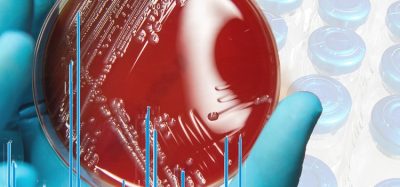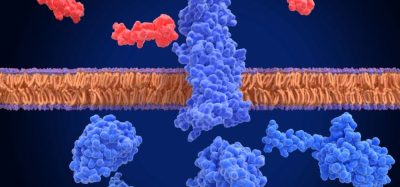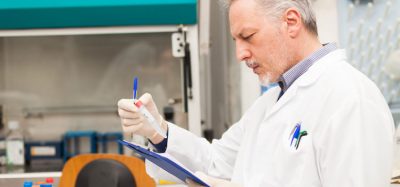Under the microscope: Highly potent APIs and toxic payloads
Dr William Sanders discusses trends in the development and manufacture of highly potent active pharmaceutical ingredients (HPAPIs) and toxic payloads for antibody drug conjugates (ADCs).
How have recent changes in the pharmaceutical industry affected contract manufacturing organisations (CMOs), specifically with respect to HPAPIs?
In the past 15 years, there has been a significant shift to focus on anti-cancer therapeutics. As a result, the proportion of HPAPIs and ADCs in the respective pipelines of most pharmaceutical companies has increased dramatically. This increase in the clinical pipeline of HPAPIs and ADCs has changed the demands on contract manufacturing partners and increased the need for high-potent handling capabilities. The result is a global shortage of production capacity, longer lead times to project initiation and longer delays in the progression of drug candidates through the clinical pipeline.
An industry-wide understanding of the toxicology of highly potent materials has increased exponentially as the clinical pipeline has expanded. Acquisition and analysis of a broader spectrum of toxicological data has led to more stringent assignment of exposure limits and implementation of stricter industrial hygiene practices designed to enhance worker safety. The combination of a greater number of HPAPIs, a more thorough understanding of toxicity and limited capacity to handle highly potent compounds in the CMO industry is stressing the limits of CMOs in meeting the supply expectations of their pharma clients.
How does process development philosophy change as a result?
Process chemistry itself does not change due to the potency of the compounds under investigation. Reaction optimisation, critical process parameter evaluation and process robustness studies are relevant regardless of compound potency. In most cases, commercial HPAPIs and ADCs require relatively small quantities of API at peak demand. This reality opens up a variety of processing techniques typically considered incompatible (eg, column chromatographic purification) with the commercial production of more traditional, less potent APIs. While chemical development requirements of HPAPIs may be similar to or even less restrictive than traditional APIs, an intimate understanding of closed-system production techniques and containment technologies is essential to manufacturing HPAPIs. Facility design, isolation technologies and general production practices can be more restrictive with respect to handling procedures compared to those employed in typical API manufacture. Careful consideration of material and equipment flow must be an integral part of the development phase and incorporated into the production plan. Additionally, continuous evaluation of new containment technologies and techniques during the development phase is critical to success.
What key technologies are important to HPAPI manufacture?
Isolator design, laboratory design and containment practices are critical to the safe manufacture of HPAPIs. At the end of the 20th century, containment capabilities were very limited in the CMO industry and common practices employed at the time have been improved upon to contain compounds based on the evolving toxicological assessments. The evolution of technology and know-how has dramatically improved worker safety, but this comes with a corresponding increase in the cost of facility design, construction and operation. In the early 2000s, only a small portion of Merck©’s SAFC® portfolio consisted of HPAPIs or toxic payloads. Today, a significant share of Merck©’s SAFC® portfolio requires HPAPI containment. This trend is broadly applicable to the industry, resulting in significant investments in facility upgrades necessary for contract manufacturers seeking to compete in the HPAPI space. While adaptation of traditional processing techniques to maximise containment are a key focus in HPAPI manufacture, new technologies such as continuous flow manufacturing (CFM) are very promising, where closed systems can be utilised to improve upon traditional containment practices. CFM is highly attractive for HPAPI production and lends tremendous promise for
experienced chemical process development and engineering groups to design future processes that are safer and more efficient.
What other implications of greater toxicities and increased focus on industrial hygiene practices are important to recognise?
The most significant implication is that HPAPI unit operations take longer. Many closed-system operations are restrictive and increase the time required compared to historical unit operations. Ultimately, this can lead to more expensive manufacturing processes. Regardless, worker safety always requires increased consideration and justification of costs. Pharma clients need to be aware of the possibility of longer lead times for HPAPI drug substance and ADC payloads. In the end, the promise of these new therapeutics, the increased efficacy, safety and better patient outcomes exceeds any extra expense derived from ensuring the safety of those tasked with producing the most promising medicines of the future.
Dr William Sanders
Will is the Director of Process Development at Millipore Sigma’s Madison, WI SAFC® facility and has been directly involved in the development of a variety of commercial small molecule HPAPIs and toxic payloads for ADCs. He is a synthetic organic chemist by training and holds a PhD from the University of Wisconsin. He has over 20 years’ experience in both medicinal and process chemistry, with the past 14 years spent at MilliporeSigma in Madison, WI and Gillingham, UK. His current interests include implementation of an automated development platform, PAT and comprehensive data management solutions in process development.
Related organisations
Merck





![Roche logo sign lit up [Credit: testing/Shutterstock.com].](https://www.europeanpharmaceuticalreview.com/wp-content/uploads/Roche-3-400x187.jpg)



